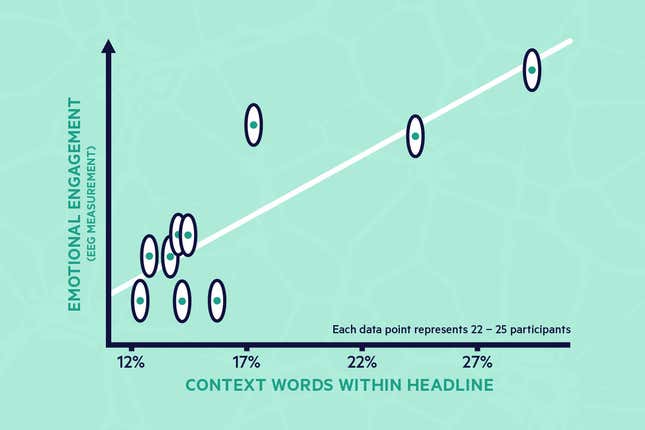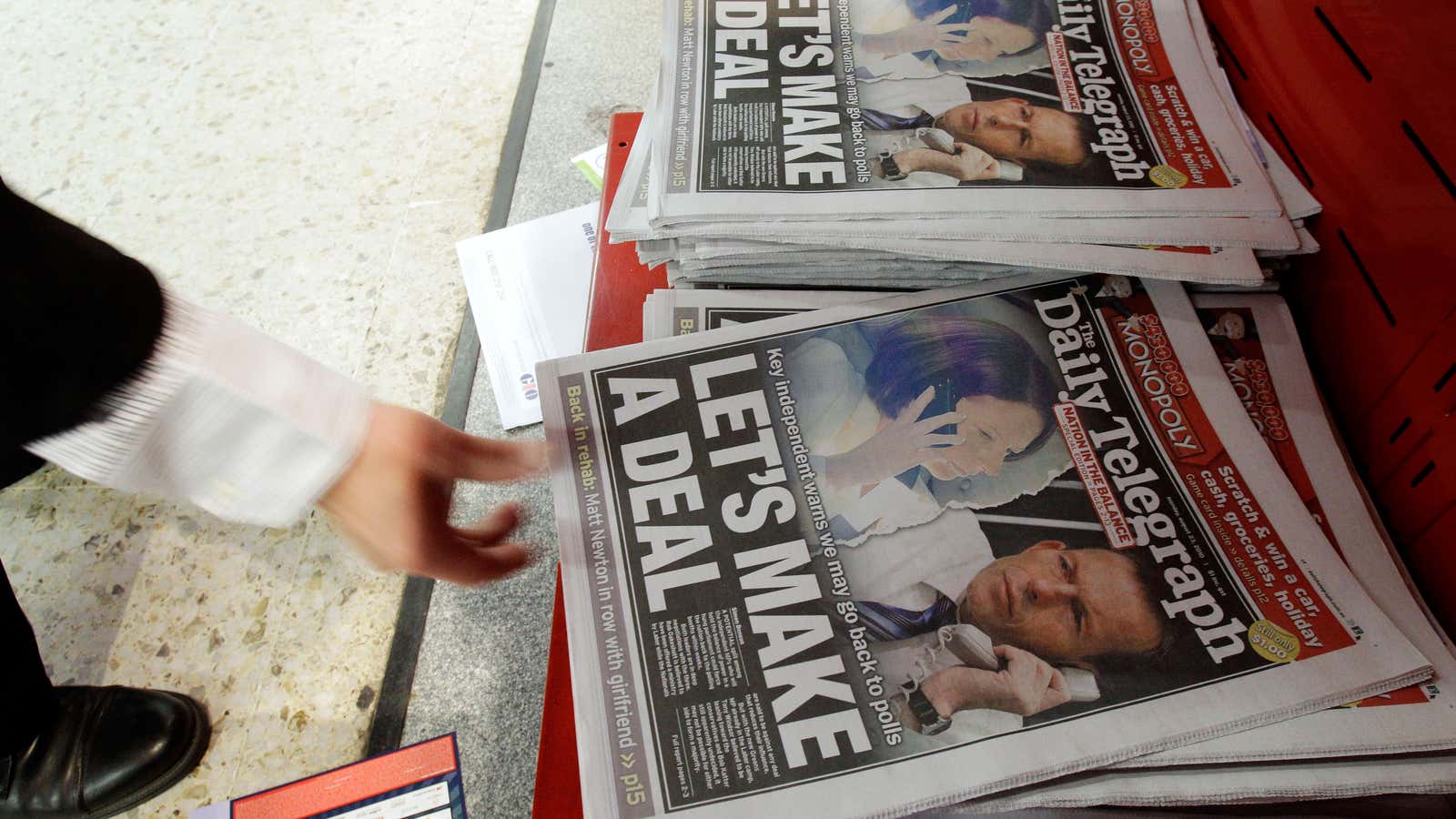As some publishers struggle to grow their web traffic, one company believes increasing the ratio of some words in headlines could draw in readers. Researchers at native-advertising company Sharethrough says they have narrowed down a thousand words in the English language that are proven to elicit higher emotional engagement.
The research released today builds on a previous study published in March from Sharethrough and Nielsen. Then, the two firms tracked eye movement and activity in the brain to identify what parts of a page readers focus their attention on.
Based on a sample of 226 people—they say this is a standard sample size for studying effects in the brain—they found that people largely ignore banner ads and spend more time focusing on text compared with images—welcome news for Sharethrough since its ads mimic the design of the websites they’re placed on.
But that study focused on what people looked at and didn’t analyzed the context of the text. As a follow up, Sharethrough took the neuroscience data and ran it against text-analysis software created by James Pennebaker, a social psychologist at the University of Texas, Austin to study the emotional engagement of words. With that, the company came up with a list of 1,072 so-called “context words,” broadly grouped into four categories (the full list of context words is available here):
- time (e.g. abrupt, today, fast)
- insight (e.g. admit, idea, secret)
- motion (e.g. act, climb, journey)
- space (e.g. away, outside).
“A word like ‘chair’, it only forces you to think about a few things,” Melinda Staros, Sharethrough’s head of research, tells Quartz. “Whereas a word like ‘history’ [a time-based context word] forces you to think about the context. It connects back to the meaning of the headline and back to reality, which takes a lot more energy for the brain.”

Based on Sharethrough’s analysis, headlines with at least a 17% ratio of context words command a much higher emotional response in readers.
“Traditional content on the internet was more about marketing to Google for the purpose of search,” says Sharethrough CEO Dan Greenberg. “Native ads, where the context fits in naturally, is more about marketing to the brain.”
That said, science will likely take a backseat to editorial judgment. Case in point: Sharethrough suggested the following optimized headline for this story: “Neuroscience reveals there are 1,072 ‘context words’ that explain the secrets behind attention.” With three context words (reveals, explain, secrets), it has a 23% context-word ratio—but the clunkiness would never pass a Quartz editor’s sniff test. (Editor’s note: I love it! We should have gone with that.)
